Update PVS vDisks for Citrix XenDesktop 7.6
- Citrix
- Citrix XenApp / XenDesktop
- 27 March 2016 at 16:32 UTC
-

- 2/2
4. vDisk : Production mode
Once the virtual machine is stopped, return to the PVS console -> vDisk Pool.
Right click -> "Versions" on the vDisk in test mode.
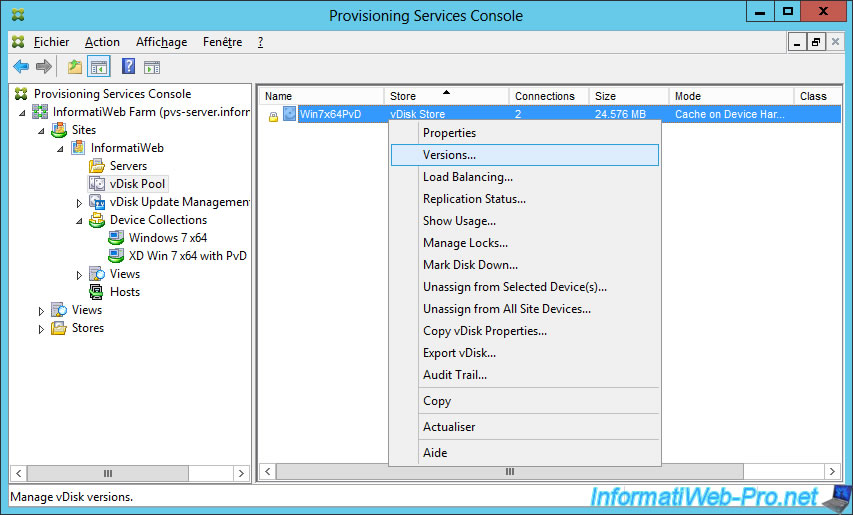
Select the "Test" version and click on "Promote".
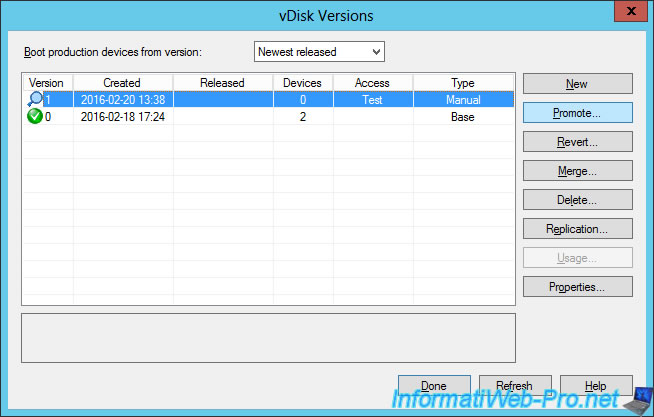
Select "Immediate" and click OK.

Wait a few seconds and once the green icon is displayed in front of the new vDisk, click Done.
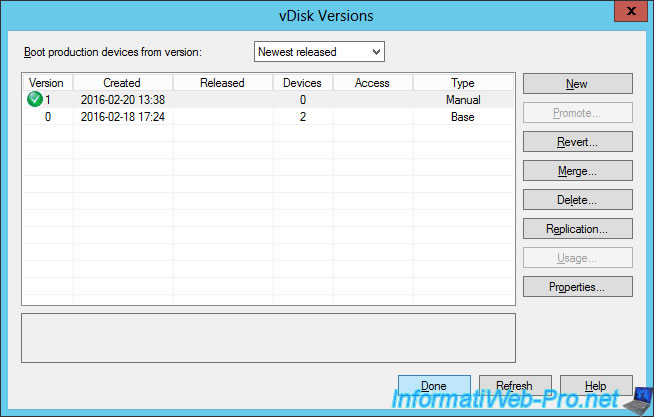
For now, your users are still using the old version of the vDisk because their virtual machines have not been restarted (Firefox and Chrome are not shown on the picture below).
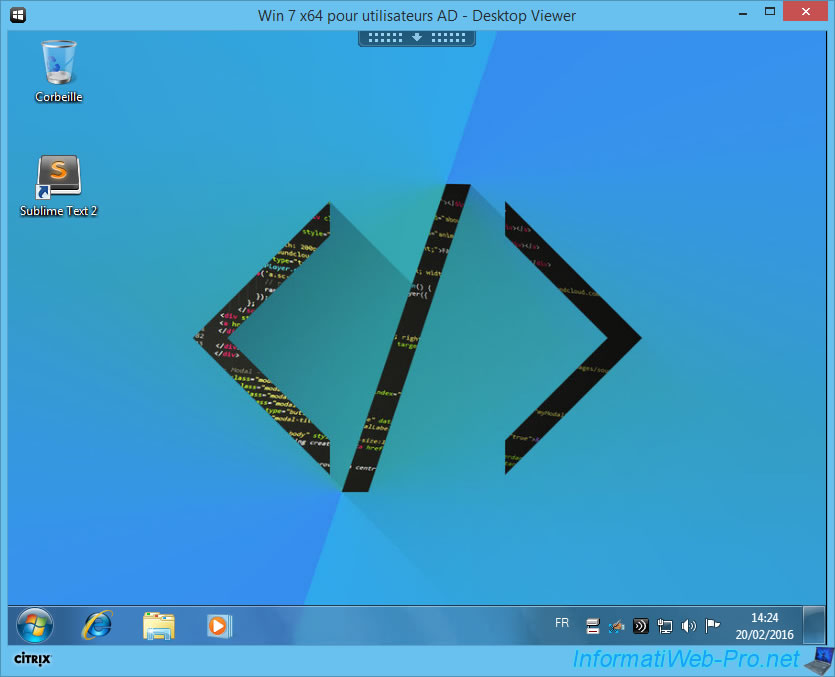
Close programs opened by users and close their sessions to avoid problems.
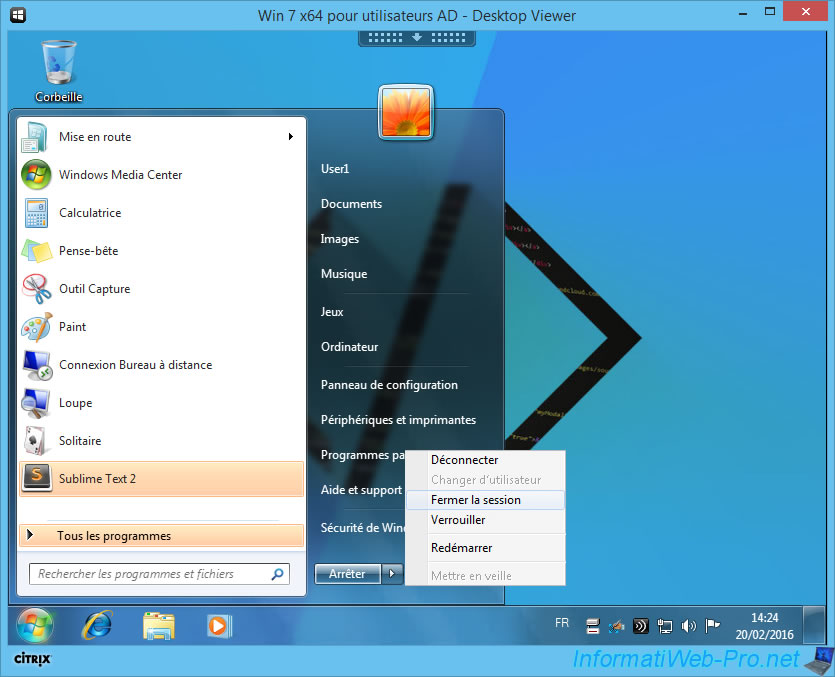
Then, in the PVS console, go to Device Collections.
Select the collection containing virtual machines created by PVS and right click : Target Device -> Restart
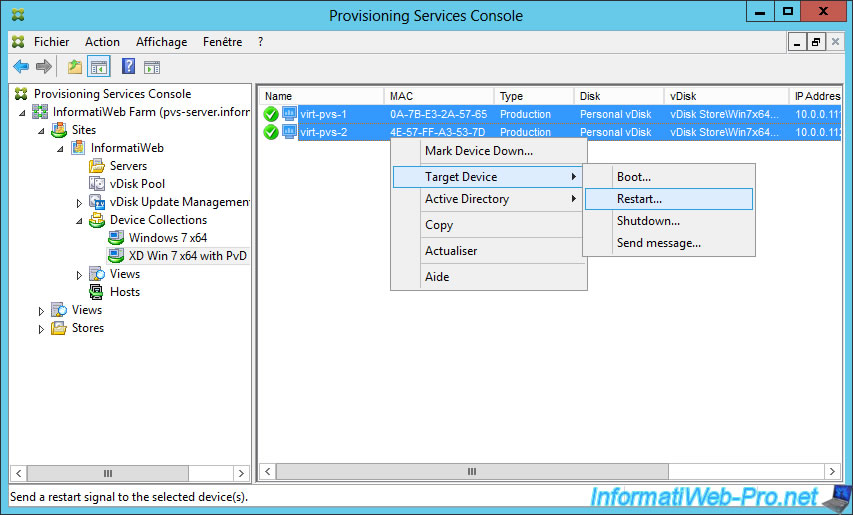
Click on "Restart Devices".
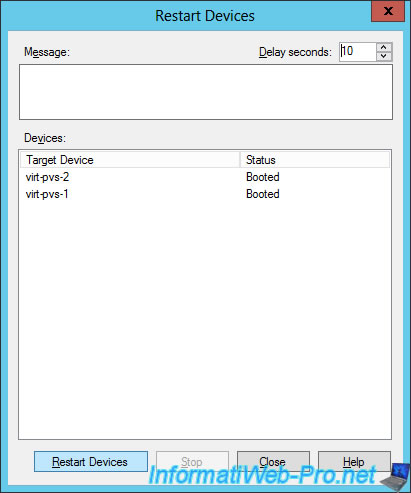
If all goes well, the status "Success" will be displayed for virtual machines involved.
Click "Close" and wait for the restart of virtual machines.
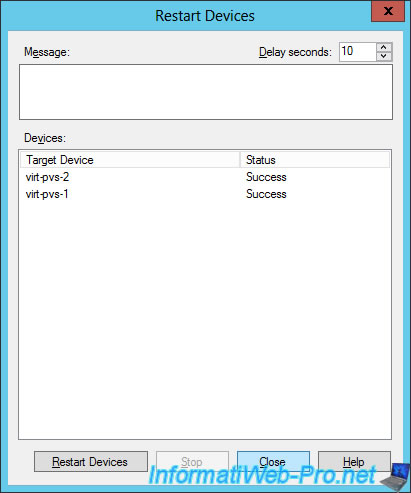
In XenCenter, you will see that the affected virtual machines are restarting a first time.
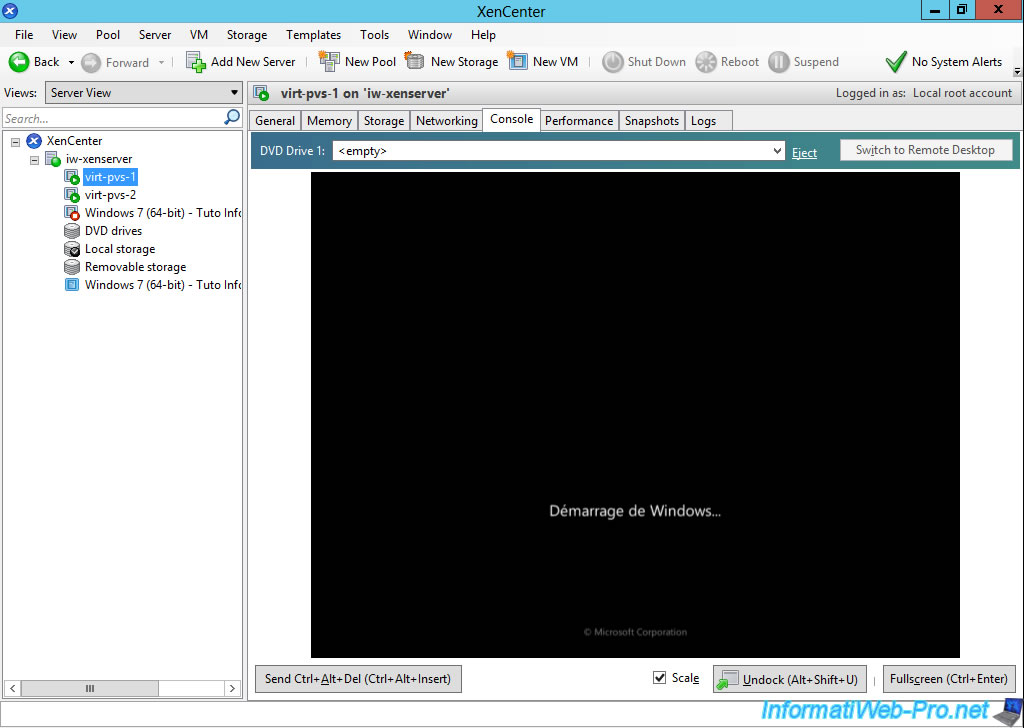
In Citrix Studio, it's possible that you see the registration state "Initialization".
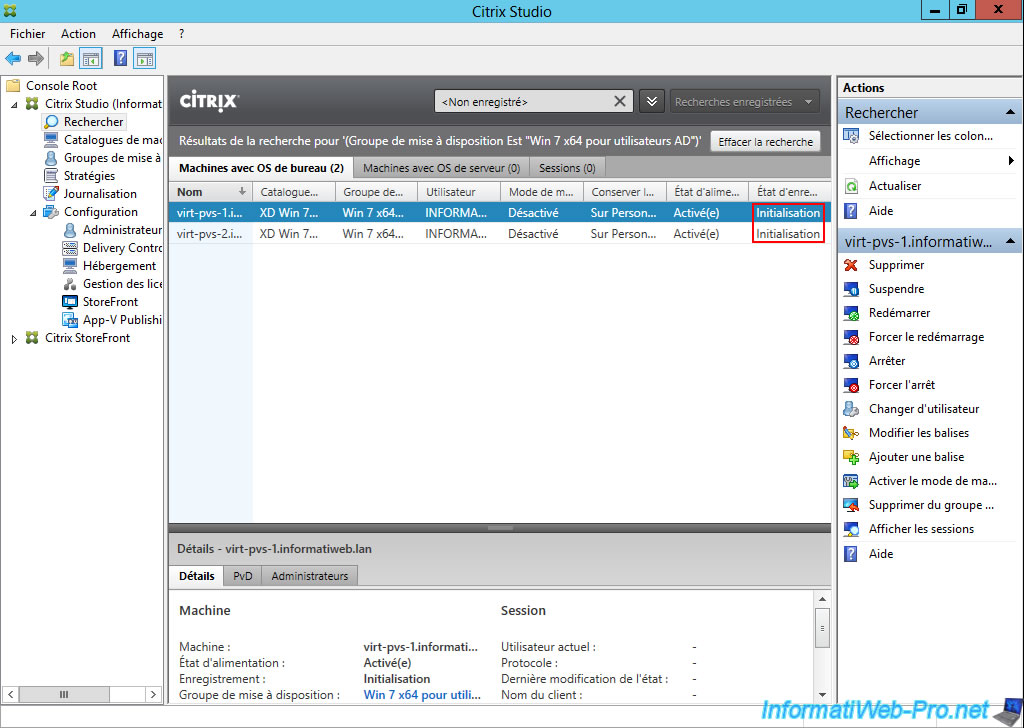
During this time, users will not have access to his virtual desktop and will receive the error "The desktop is temporarily unavailable due to planned maintenance".
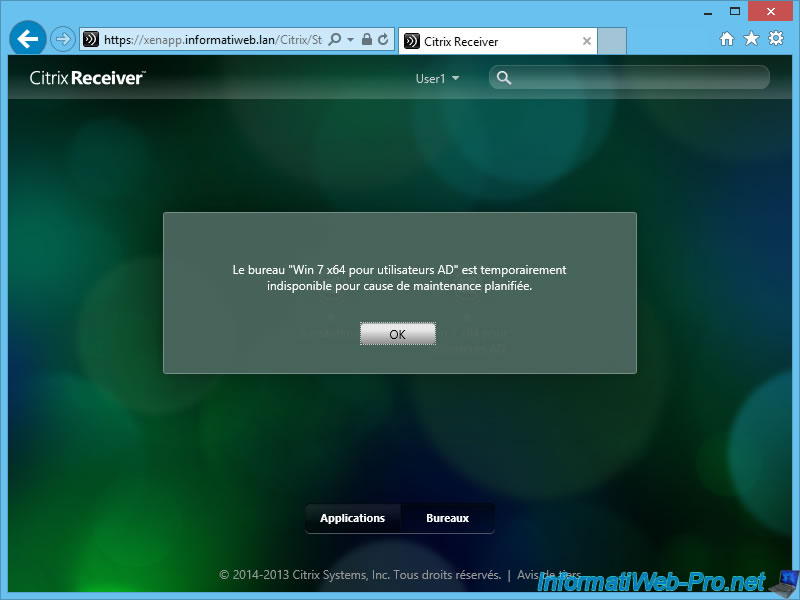
Oddly, the machine restarted by PVS will still reboot 2 times before being available to your users.
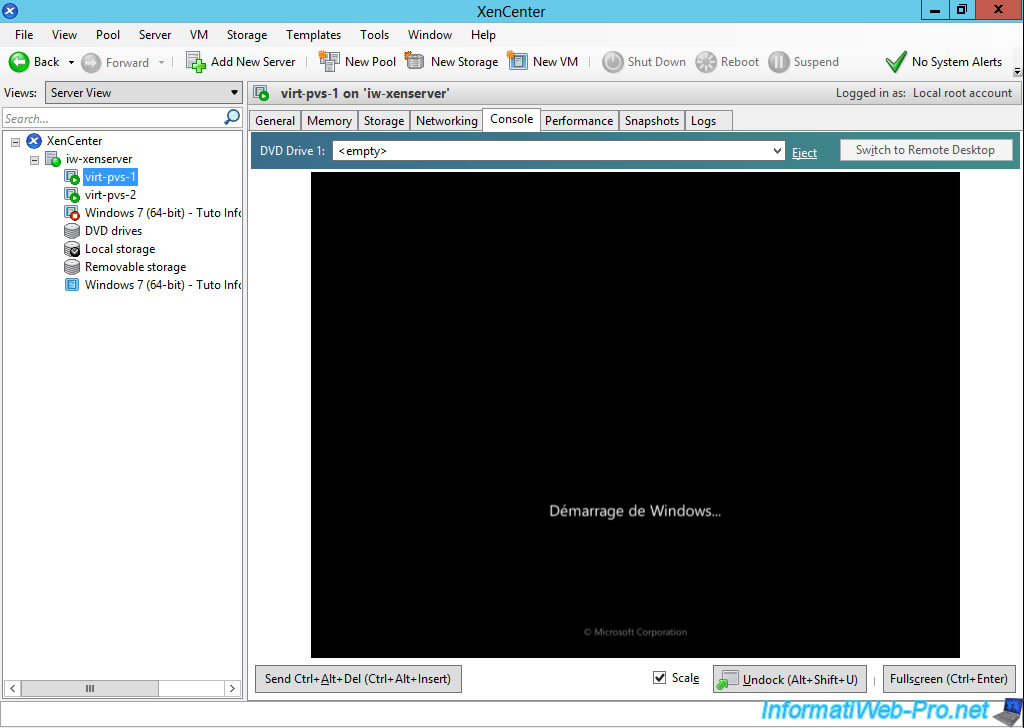
Indeed, after a while, these machines have a registration state "Not Registered".
This means that these machines are not yet available for your users.
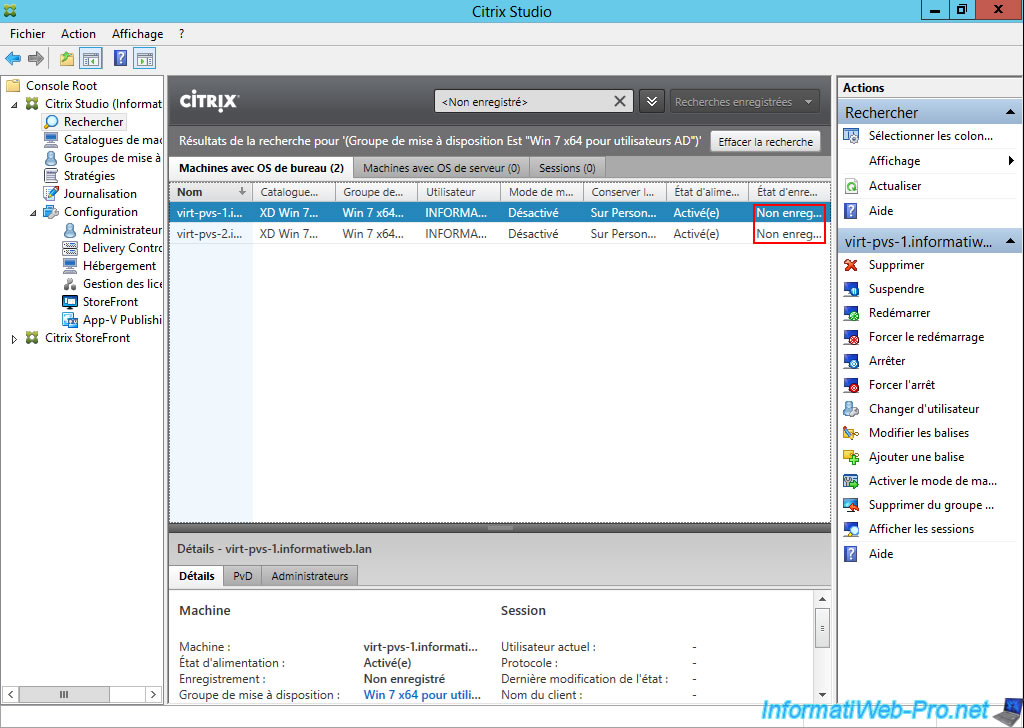
Wait 5-10 minutes if necessary to the machines finish their 2 additional reboots, and the registration state will automatically switch to "Registered".
From now, these machines will be available for your users.
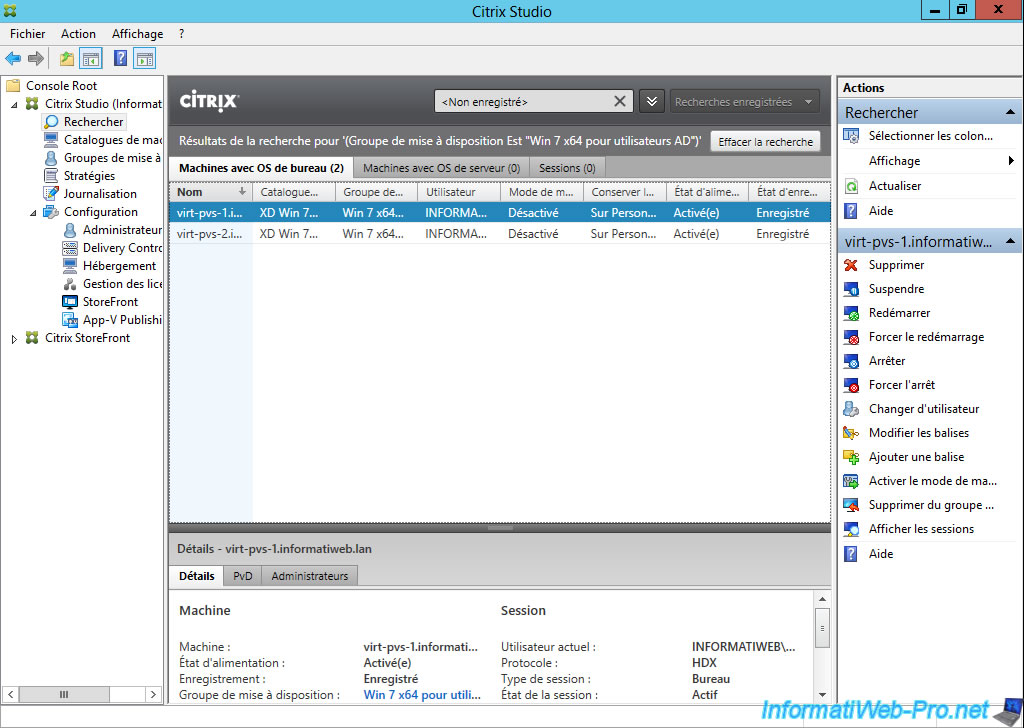
As you can see, the web developer still has his "Sublime Text 2" program and his personal wallpaper.
And he also has access to two web browsers installed by the system administrator on the base virtual disk.
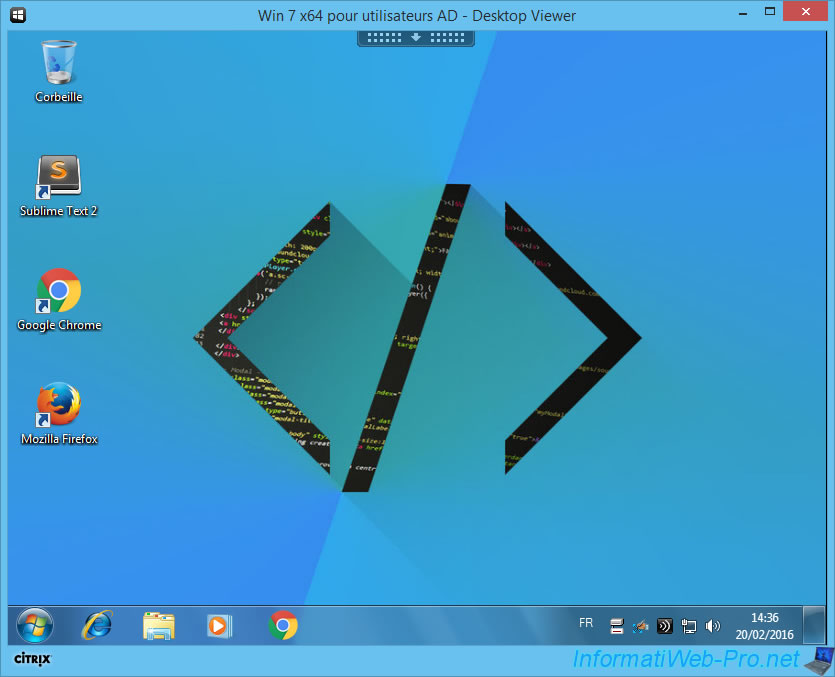
Because all the machines created by PVS use the same virtual disk base, the secretary also has access to two web browsers installed by the system admin.
And she still has its "OpenOffice" program and his personal wallpaper.
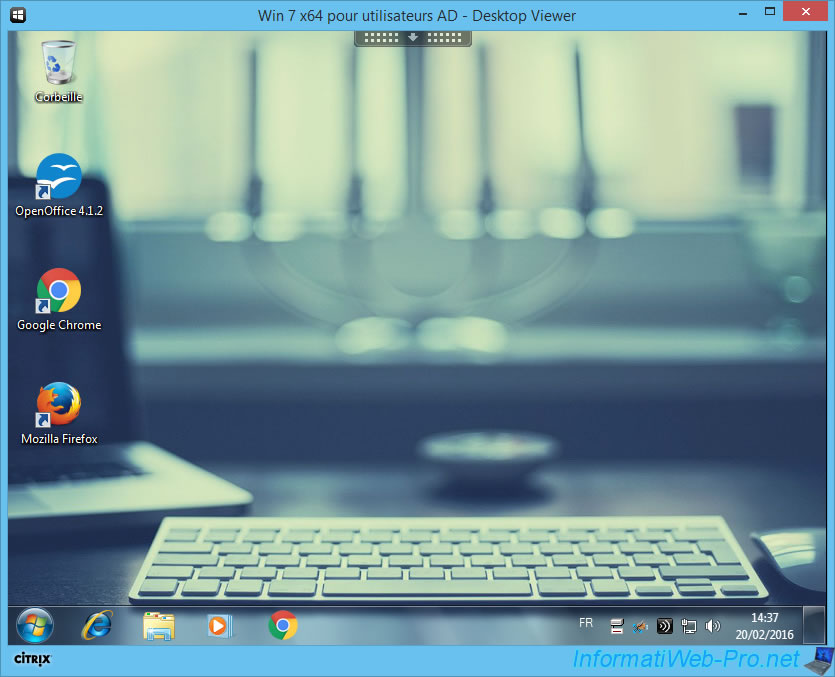
In short, in a company with 100 employees, the administrator will only manage one virtual disk.
Moreover :
- In case of problems, it is always possible to go back through versions of vDisk, without losing user data.
- The number of virtual machines used by employees require far less disk space. But, your XenServer server should have plenty of RAM, and a very good bandwidth to prevent slowdowns.
5. Bonus : Shut down properly virtual machines created by PVS
If you try to shut down virtual machines using XenCenter, these virtual machines will reboot automatically.
In fact, when virtual machines are not in maintenance mode, Citrix manages automatically the power of virtual machines that are in a delivey group.
To be able to shut down these virtual machines, you must put these machines in maintenance mode.
To do this, open Citrix Studio and go to "Machine Catalogs".
Right-click on the desired machine catalog and click "Display machines". (Or double-click on the desired machine catalog)
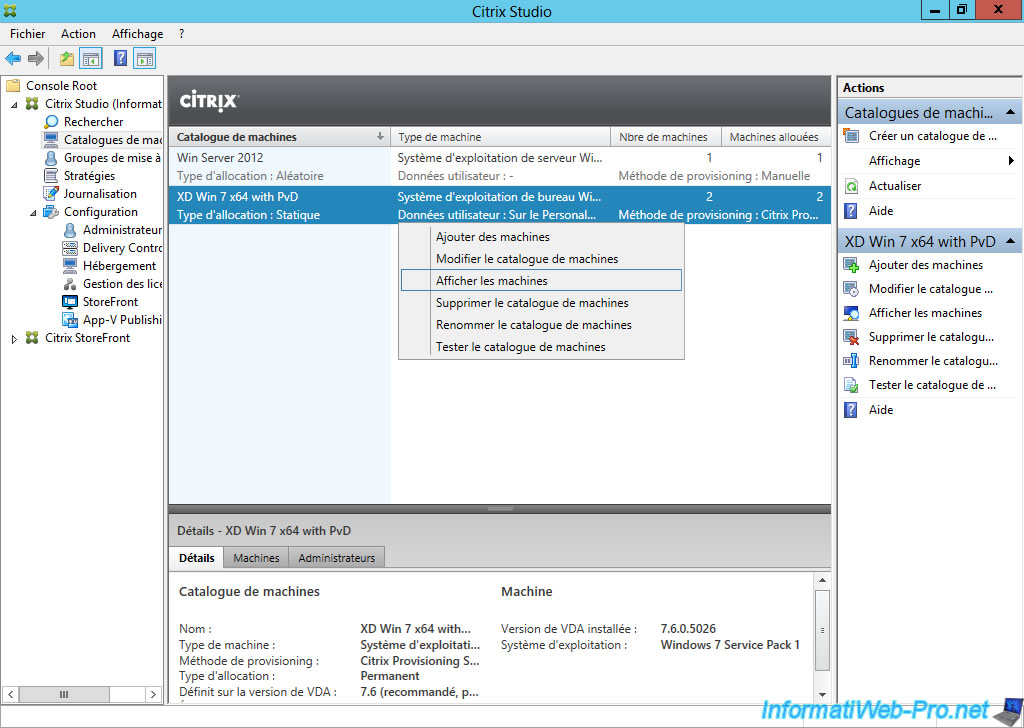
Select virtual machines, right-click on one of them and click "Enable maintenance mode".
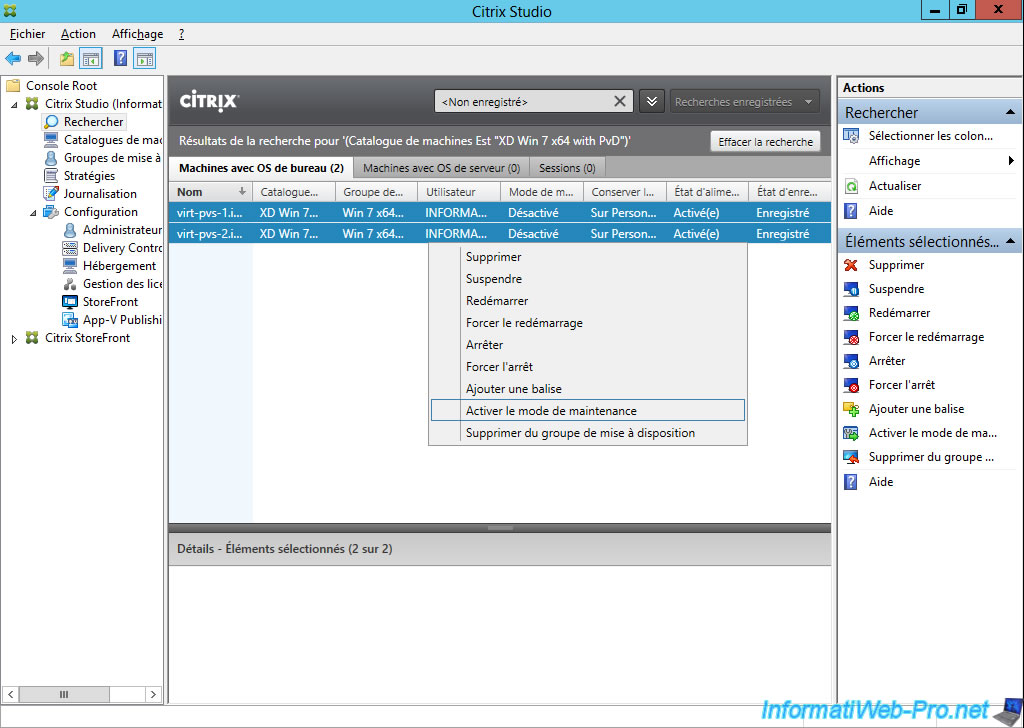
Click "Yes".
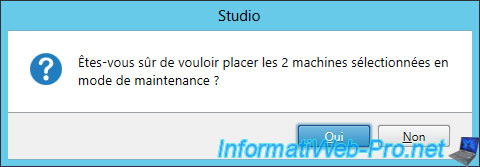
Then :
- Either virtual machines automatically stop
- Either stop them using XenCenter using the "Console" tab.
Note : If you do not have access to XenCenter, you can stop them from Citrix Studio. (In : Machine Catalog -> double click on the machines catalog -> Select the desired machines -> Right Click -> Stop)
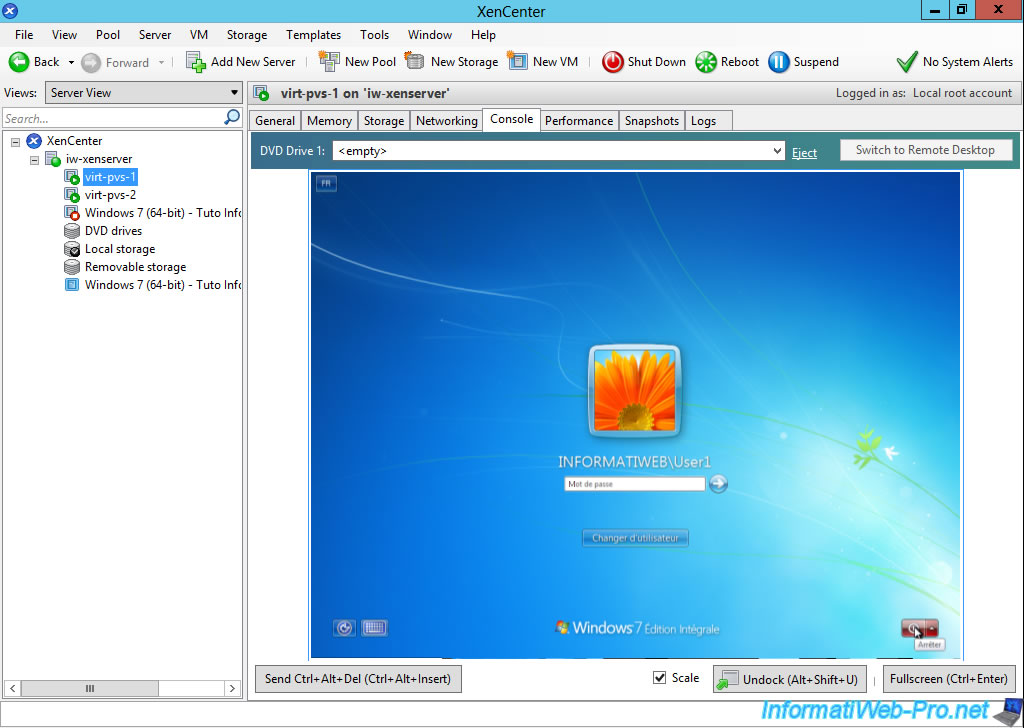
Now that the virtual machines are stopped, you can shut down your virtualization server if you wish.
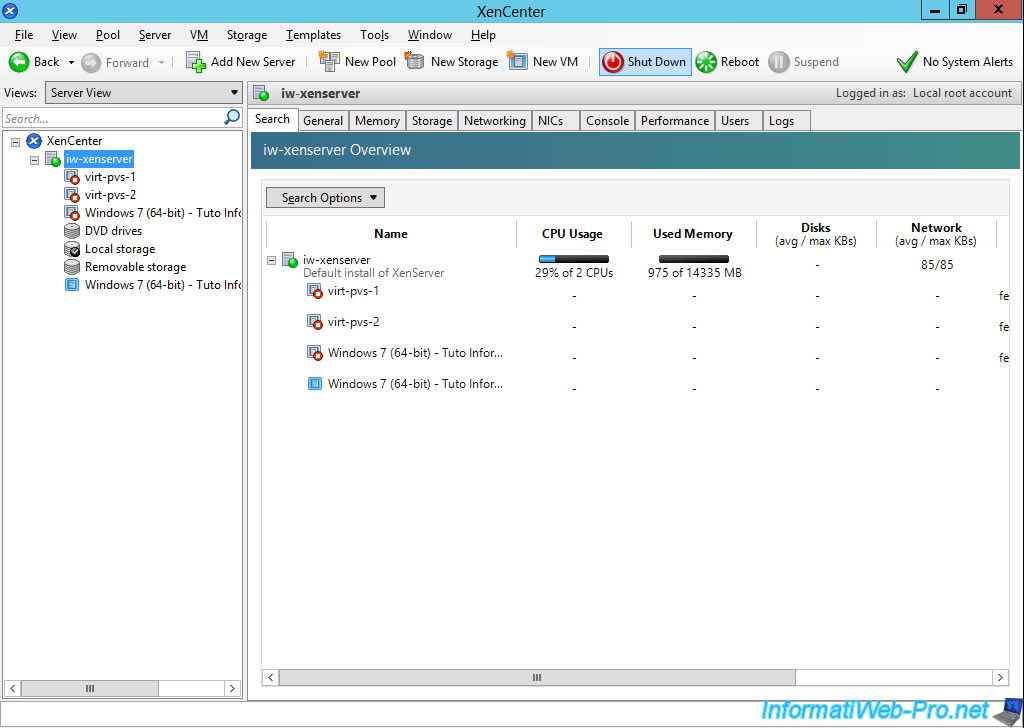
6. Bonus : Reboot virtual machines set in maintenance
When a machine is in maintenance, its status is "not registered" and the controller acts as if this machine does not exist. This causes an error on the client side.
So, to solve this problem, simply disable the maintenance mode of machines using Citrix Studio.
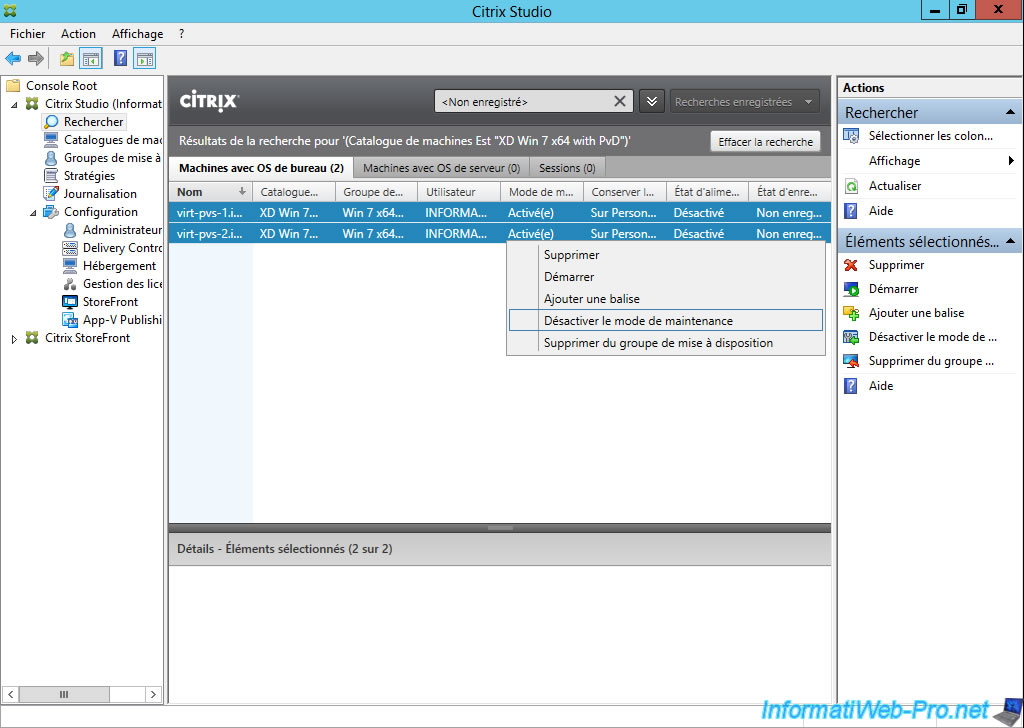
Click "Yes".
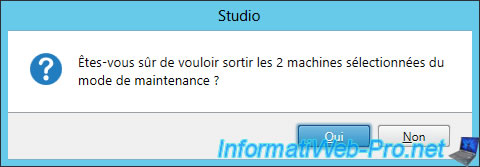
Now, these machines will start if a user tries to access to his virtual desktop.
That said, the user will have to wait several minutes for the full start of the concerned virtual machine.
If you want to avoid him to wait for several minutes, just select the desired virtual machine, right click on it and click "Start".
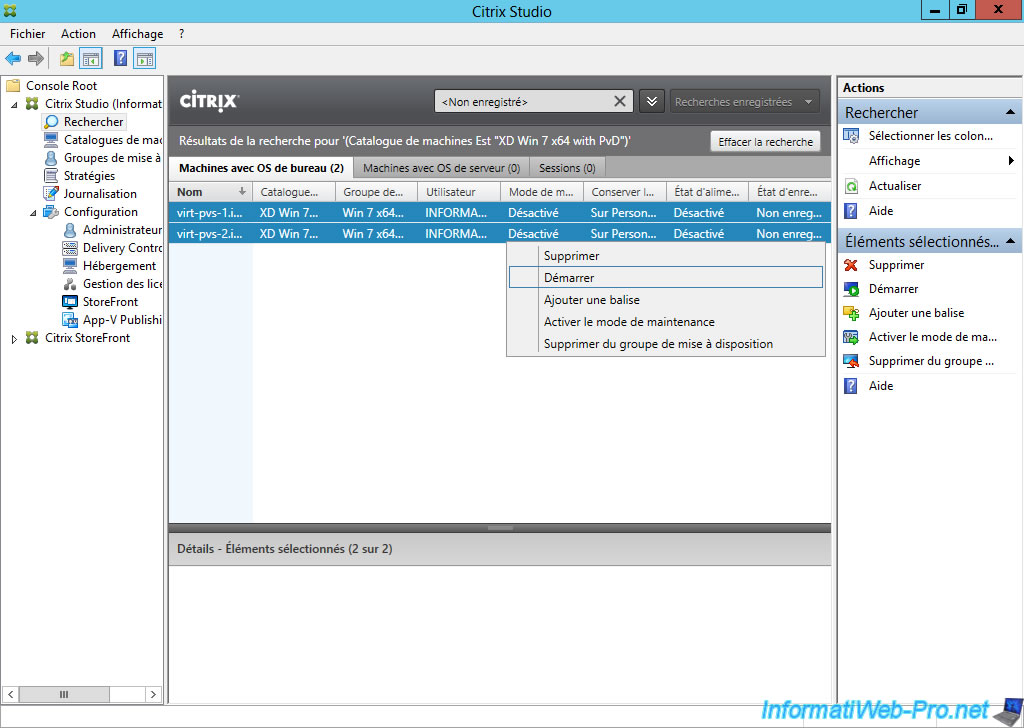
Click "Yes".
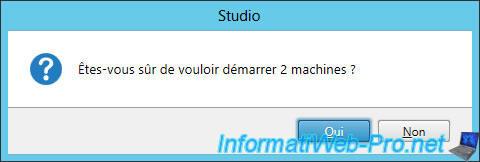
Virtual machines start.
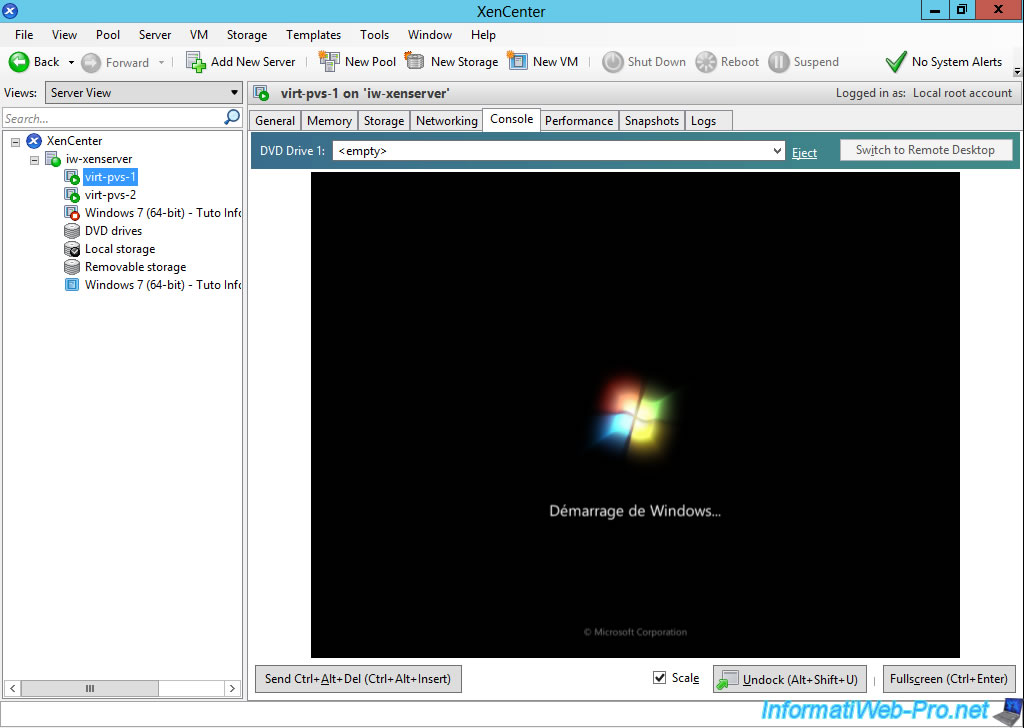
Once started, they will again be accessible by your users.
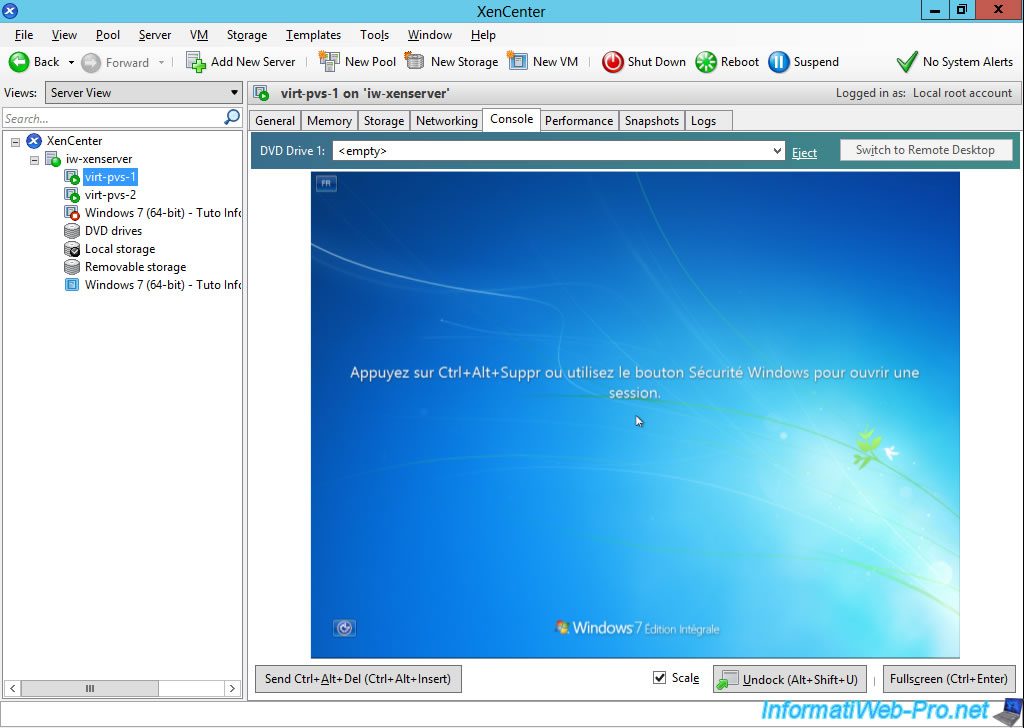
Now, our user can access to his virtual desktop in a few seconds.
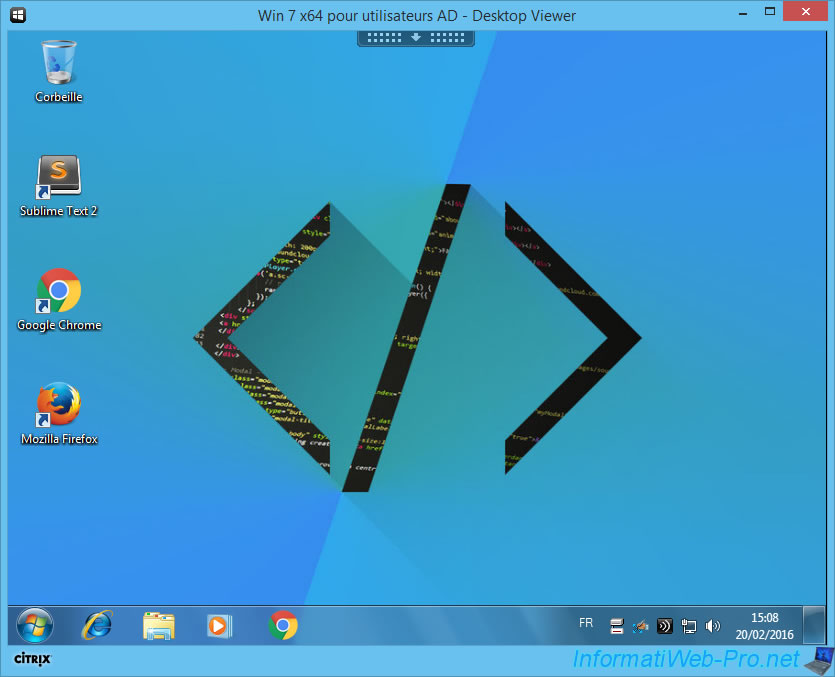
Share this tutorial
To see also
-
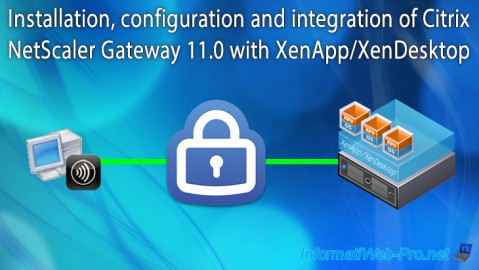
Citrix 4/9/2016
Citrix NetScaler Gateway 11.0 - Configuration and integration with XenApp/XenDesktop
-
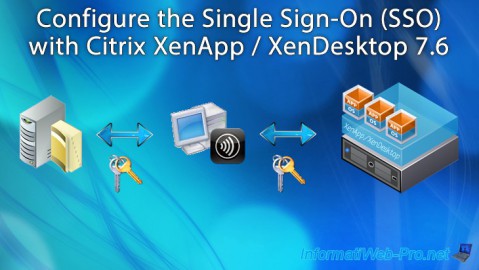
Citrix 8/2/2016
Citrix XenApp / XenDesktop 7.6 - Single Sign-On (SSO)
-
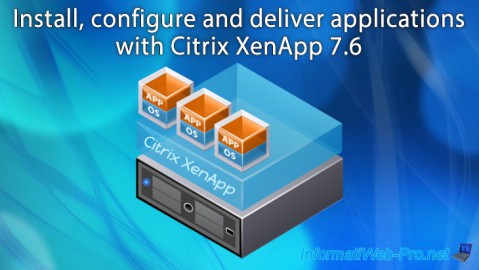
Citrix 3/22/2015
Citrix XenApp 7.6 - Applications delivery
-
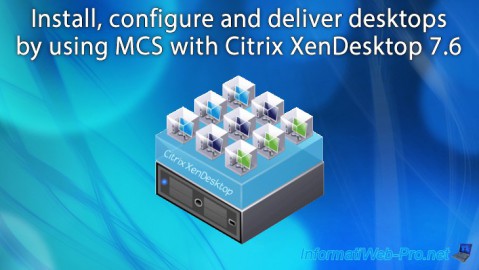
Citrix 5/13/2015
Citrix XenDesktop 7.6 - Deliver desktops by using MCS

No comment